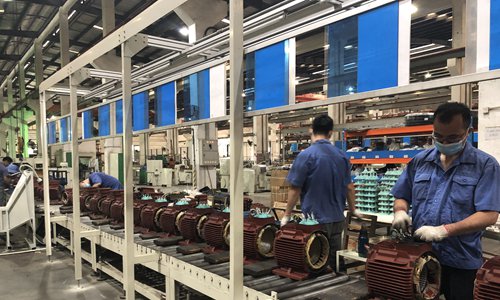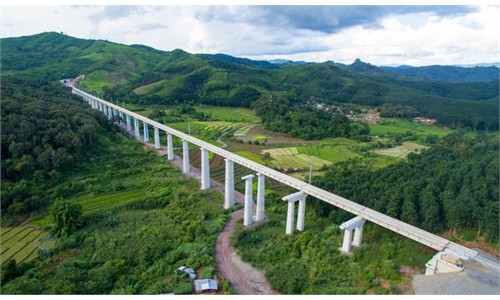
Workers at Dongguan Electric Motor Co produce motors in Dongguan, South China's Guangdong Province on Thursday. Photo: Zhang Hongpei/GT
China aims to tap into high-efficiency, energy-saving motors to further its green drive, according to a circular released by the Ministry of Industry and Information Technology (MIIT) and the State Administration for Market Regulation (SAMR).
The circular, an action plan that covers the period from 2021-23, stipulates that such advanced motors should account for over 20 percent of all motors in service by 2023, a move that will save 49 billion kilowatt (kW) hours of electricity a year. The annual production capacity of such motors should hit 170 million kW hours by 2023.
Such an achievement would equal an annual reduction of 15 million tons of standard coal consumption and reduce carbon dioxide emissions by 28 million tons.
The circular calls for breakthroughs in core materials, parts and techniques. It also calls for the rise of backbone manufacturing companies with competitive advantages so as to achieve the high-quality development of the motor industry.
Electric motors are widely used in industrial machinery, transportation and household appliances.
Available data showed that in 2015, China had 2.4 billion kW worth of electric motors, which used 65 percent of the country's electricity that year. However, the energy efficiency of motors installed in China is lower than in developed countries.
The circular calls for adopting motors with better energy-efficiency performances, including those powered by rare-earth permanent magnets.
Huang Zhiyong, a rare-earth magnet industry veteran based in Dongguan, South China's Guangdong Province, told the Global Times on Monday that the new policy will bring immense opportunities for rare-earth permanent magnet manufacturers, provided that they could field advanced technologies.
"Currently, most electric motors are installed in new-energy vehicles and wind turbines, as the two have inelastic demand for such high-efficiency motors," Huang said.
In terms of magnetic strength, rare-earth permanent magnets are 600 times more powerful than traditional motors, according to Huang.
More than 90 percent of the world's rare-earth permanent magnets are produced in China.
Global Times



